The Best of Aspen Snowmass
For many skiers, Aspen is an intimidating place with an extreme reputation. I was deep into my list of “places I’ve skied” before I even considered going to Aspen, and boy, what a mistake that was. Looking back, I should never have waited so long. Going forward, I will likely never miss a season without a trip back to the Roaring Fork Valley. In short, Aspen is a world-class town, with world-class skiing.
Talk Like A Local
Regardless of how long you’re in Aspen for, it’s important to know some key terminology so you can sound like a local when you inevitably meet one on a gondola or chairlift. Depending on the context, “Aspen” could refer to a variety of things.
Not to add further confusion, but Aspen Mountain is also sometimes referred to as “Ajax” as, back in the 1800s, when the mountain was a silver mine, the area that sits directly under the now-popular Sundeck Restaurant was known as Ajax Hill. “Ajax” is also the name of the high-speed quad that sits mid-mountain, as well as the name of the tavern that’s at the base of the Silver Queen Gondola. Got all that?
Getting There
Flying into the area is straightforward as the Aspen/Pitkin County airport (ASE) is conveniently located just 4 miles West / 10 minutes’ drive to the center of Aspen’s city core, or 15 miles East / 15 minutes’ drive to the heart of Snowmass.
The airport is usually served by all three major U.S. airlines – American, Delta, and United – with daily direct flights from their major hubs (except those in the Northeast unfortunately). Make sure to include possible weather-related delays in your expectations for arrival or departure. Taxis are limited in the area, and Uber / Lyft do not operate, so either make a reservation with High Mountain Taxi, use your hotel’s shuttle (if available), or take a free bus into town (the bus stop towards downtown is just outside the airport, on the right along the highway).
If you don’t want to fly into Aspen, you can fly into Denver, rent a car, and drive ~200 miles West on i-70. Keep in mind that weather and traffic will determine if that trip takes you 3.5 hours or multiples thereof. You’ll also have to drive through several passes on i-70 that can be quite dangerous in a storm – so be cautious.
It is possible to rent a car in Denver and drop-off in Aspen if you don’t want to keep the car for the duration of your trip. Whether you need a car for the duration of your trip really depends on where you’re staying. Check out Rentalcars.com (part of Booking.com) to get quotes from the biggest brands in car-hire including Hertz, Avis, Europcar, Alamo, Budget, Enterprise, Dollar and Thrifty.
It is not possible to drive into Aspen in the winter from the East as Independence Pass is closed from October through May. But I highly recommend coming back to Aspen in the summer to explore Independence Pass, Maroon Bells, and many other areas that are not as accessible in the winter. Plus, the area is like adult summer camp, with unlimited activities such as hiking, biking, rafting, stand-up paddleboard, free concerts, free movies etc, golf, tennis, pickle-ball, farmer’s markets and more!
Getting Around
Since Aspen has one of the best transportation systems of any ski town I’ve been to – with free buses that run to all surrounding areas – if you are staying Downtown or near a bus stop, you really don’t need a car. From the Rubey Park bus station in the center of Downtown Aspen, it takes just 15 min to get to Highlands, Buttermilk, or the airport, and 40 minutes to get to Snowmass. Bus lines and stops are clearly marked and tend to run every 15 to 30 minutes wherever you are, plus the city has a great Live Bus Tracker.
Where to Stay
First, Aspen sells out quickly, so I recommend booking as far in advance as possible and you can search 250+ properties easily on Booking.com. Second, to answer, “where should you stay” you should ask yourself “what kind of ski vacation do I want?”
Downtown Aspen if you want to be close to a wide variety of shops, restaurants and bars with easy access to skiing.
Snowmass for ski-in, ski-out access to great skiing, with some shops, restaurants and bars, followed by Highlands, although Highlands has far fewer shops, restaurants and bars than Snowmass.
Valley Towns if you don’t care about being near town or mountains because you’re willing to drive or take the bus to wherever you want to go, Down valley towns including Basalt and Carbondale, which are 20 and 30 miles from Aspen respectively, offers less expensive accommodations.
I love the modern Wild West décor and classic cocktails at the Hotel Jerome, whose history dates back to 1889. The Little Nell has both a hotel and residence adjacent to the gondola base area. The St. Regis, is one of the larger properties in town and has by far my favorite hot tub area, and the Limelight Hotel and the W Aspen are also popular high-end options. On the more budget end, check out Hotel Aspen, Aspen Mountain Lodge and the Aspen Square Condominium Hotel.
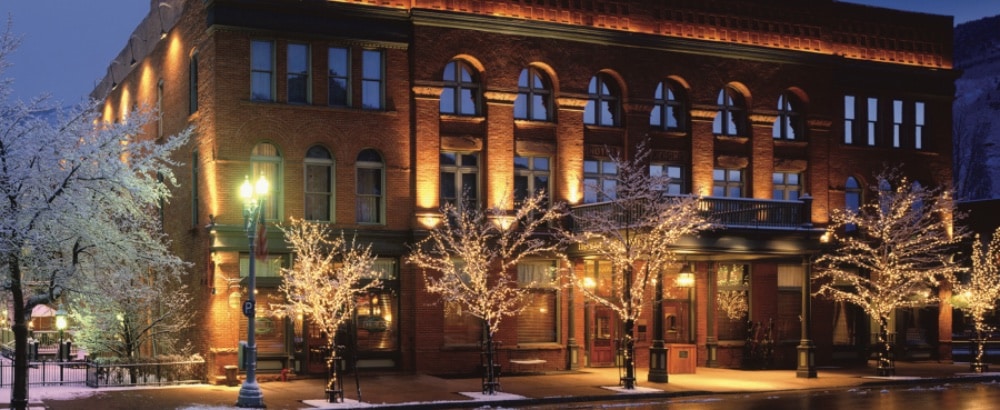
If you decide you want to stay at Snowmass, there is an abundance of housing options, including slope-side homes, ski in/out condos and traditional hotels such as the Viceroy or the Tamarack Townhouses. Near Highlands, you will find similar, although fewer options, anchored by a large Ritz-Carlton property. Buttermilk offers the least number of nearby accommodations, with just The Inn at Aspen at the base of the mountain, although this may be one of the most affordable hotels in the area, and buses stop right out front to take you into town or to another hill.
Downtown Aspen & Shopping
Aspen is unique from other ski towns in the U.S. as you will find everything from truly local boutiques, gear shops and marijuana dispensaries to outposts of some of the most luxury brand names in the world. Nowhere else do back-country outfitters fit as naturally amongst high-end art galleries as in Aspen.
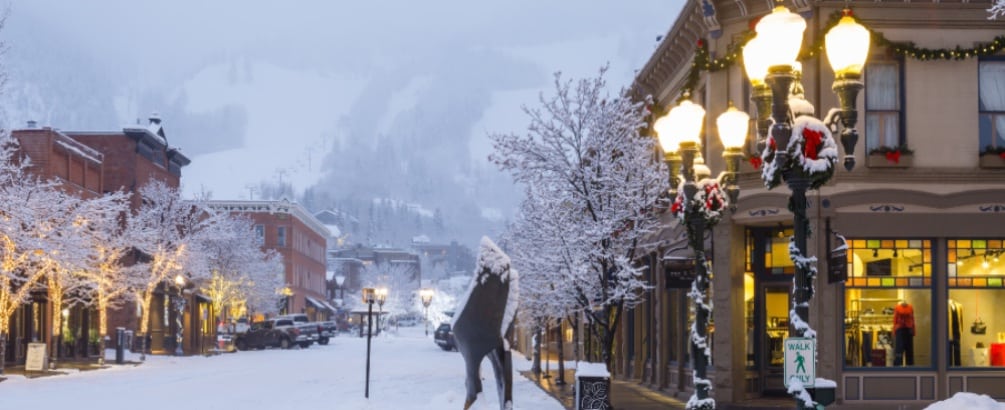
Where to Ski
Ok let’s get to the most important stuff: THE SKIING!!!!!
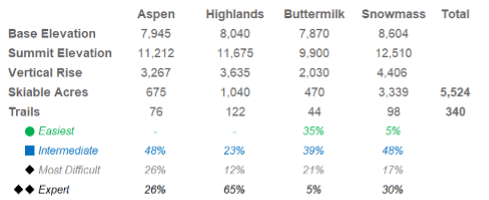
I mean, just look at these numbers: two of the mountains don’t have any beginner terrain, including the mountain that rises from downtown! In short: Aspen Mountain and Aspen Highlands are where locals and experts alike spend most of their time; Buttermilk is a heaven for beginner and intermediate skiers; Snowmass has an equal amount of intermediate and expert terrain and tends to be where visiting families spend the bulk of their time (it is also my personal favorite because of its size)
Aspen Mountain
With a base elevation just shy of 8,000 ft, and a summit of just over 11,200, it’s wild to have 3,200 vertical rising from as large a downtown as Aspen. There are two main access areas, the Silver Queen Gondola in the center of town, and Shadow Mountain / Lift 1A at the top of S. Aspen Street. (Note: the last tenth of a mile to the lift is a bit of an uphill climb). The gondola goes to the peak, while Lift 1A gets you about a third of the way uphill. From Lift 1A, most skiers connect to Ruthie’s express triple to get higher.
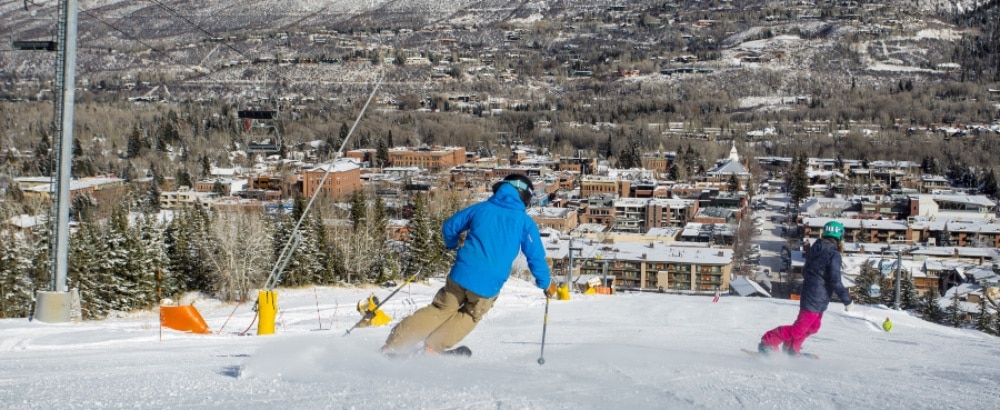
Next, assuming the snow has warmed up a little, take Gentleman’s Ridge and hit any of the Glade Runs (although avoid Jackpot and Bingo which may be too frozen if it’s a cold morning). Just before you get to the base, take Schuss Gully on skier’s left just under the Little Nell chair, and end up on Lift 1A. Take that double and connect over to the Ruthie’s express triple for either an exhilarating groomer run down Ruthie’s (the steepest and widest groomer on the hill) or choose any of the Dump runs off International. (Note: only Bear Paw has a path back to the FIS Chair – all others will require you to ski to the base). My personal favorite Dump is the last one, Silver Queen Ridge, as you end up right over The Compromise Mine building. It’s also possible to take one of the first few Dump runs and cross Spar Gulch to Bell Mountain, and traverse high to get some turns on Shoulder and Nose of Bell.
Aspen Highlands
Other than spraying champagne on strangers at Cloud Nine, Aspen Highlands’ second most famous activity is hiking the legendary Highland Bowl. However, the mountain has a wide selection of lift-accessible expert terrain if hiking up to 12,000 feet is not your jam. Similar to Aspen Mountain, there are no easy trails at Highlands, so it’s not suitable for beginners.
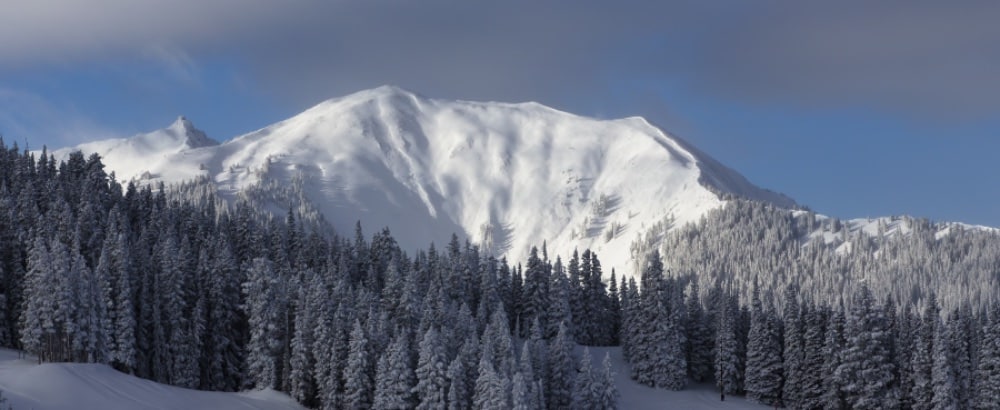
On a powder day, skiing Highlands is a no-brainer: head right to Deep Temerity or the Highland Bowl. Deep T has extremely long and steep glades (the shortest are just shy of 1700 vertical) with a mix of wide-open areas and tree-skiing, so just meander your way down. If the bowl is open, you can either hike it in its entirety, or take the cat about a quarter of the way up. Head over to the full-resort guide for pro-tips on making your bowl lap the best possible.
On a non-powder day, start out by taking Exhibition to mid-mountain and hopping on the Cloud Nine chair to warm up on the groomed-blues right underneath– they are super fun and a great place to show off your turns. These, and the runs under Exhibition, are all North-ish facing, so will ski well all day long. You may want to ask fellow-skiers or ski patrol how Steeple Chase, Deep T or the Bowl is skiing before going into either as they are all East-ish facing so get baked by the sun most of the day – and once you’re in, there is no turning back. Two other favorites to check out are Olympic Bowl (aka Oly Bowl), which is also North-ish facing, and the Thunder Bowl, which is my favorite steep groomer on the hill.
Buttermilk
Despite its beginner reputation, Buttermilk also attracts some of the biggest expert skiers/snowboarders in the world, as it hosts several competitions each year, including the Winter X Games. The halfpipe and big air jumps are right at the main base of the mountain, providing inspiration for the first-time skiers and boarders going up the Summit Express.
The mountain is divided into three main areas (Tiehack, Main Buttermilk and West Buttermilk) anchored by three main high-speed quads (the Tiehack Express, the Summit Express, and the West Buttermilk Express). Tiehack has the more intermediate and advanced beginner terrain; the Summit/Main face have a mix of beginner, intermediate and advanced beginner terrain; and West Buttermilk is the flattest and easiest area of the three. Because Buttermilk is a beginner hill, it has lots of fun areas designed specifically for children, and also attracts uphillers looking for a great workout.
Snowmass
Located just 9 miles from downtown Aspen – and accessible via free bus, Snowmass is the largest of the four Aspen mountains and has the greatest diversity of terrain, with hundreds of acres of beginner trails, steep expert runs and wide-open cruisers. It would be hard not find a perfect trail no matter your ability level.
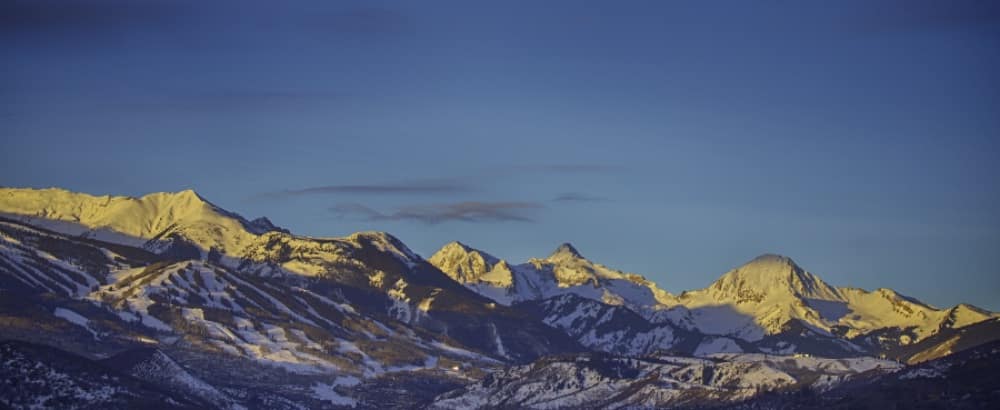
Here’s my ideal sunny groomer day at Snowmass… If you’ve started at the Village Six-Pack, take it to the top and do a few laps on the groomers off Sam’s Knob. Be careful not to pass that lift as the journey down to Campground can be long and painful depending on the snow-quality. Next, ski over to Big Burn and check-out Sneaky’s (ducking into the Powerline Glades if the snow is soft). Something else under the Big Burn chair will also be groomed, so check the board at the top. You can also access everything under the Sheer Bliss chair from the top of Big Burn, and Sheer Bliss is often mostly groomed (the bottom can get rutted). Then, ski past Big Burn and Sheer Bliss, and stay skiers right to get to Alpine Springs. Here, you’ll find my favorite groomers, including Naked Lady. From Alpine Springs you can get to High Alpine where, again, check the board at the top to see what’s groomed. To be honest, I don’t spend much time over at Elk Camp, but the groomers off the peak are wide-open. If you’ve started your day at Two Creeks, just do this itinerary in reverse.
A powder day at Snowmass can be epic, and I’ll ski the mountain entirely differently than on a sunny groomer day. When it dumps, I head right to High Alpine and get into the Hanging Valley area (10 min flat hike), for long meandering runs in glades, gulleys and everything in between. Because of the hike in, this area generally stays empty, and you can get fresh tracks all day long. (Note: you’ll end up at the Alpine Springs chair.) While the Cirque area is also great on a powder day, the poma can be quite a long line, so get into KT Gulley and Rock Island off of Sheer Bliss. Lastly, Burnt Mountain, accessed at the Elk Camp peak, will also have fresh tracks long after a storm due to the 15 min hike up. (Note, this area has an extremely long-run out so it’s not a quick run). On heavier powder days, the groomers at Snowmass can be difficult as they are not as steep as at Aspen Mountain or Highlands – I’ve seen a lot of carnage on those days due to beginners getting stuck.
Back-Country Skiing
Aspen Powder Tours
Were to Eat in Aspen
Another one of the best parts about Aspen is the depth and breadth of the bars and restaurants in the area (although I do wish there was more Chinese, Thai and Indian options). There are several great coffee shops including Local, Ink Coffee, Bear Den and Gorsuch Café right at the base of the gondola. (Pro-Tip: Ski-Co actually serves free coffee in the gondola plaza every morning.)
My favorite casual dining / to-go restaurants are Grateful Deli, Big Wrap (cash-only), Jour de Fete (yummy salads and sandwiches), CP Burger (Aspen’s Shake Shack), New York Pizza (great for late-night) and Poppycock’s (famous for their oatmeal pancakes). But, if you’re not downtown, check out the Aspen Business Center just across the street from the airport, which has the French Pastry Café, Louis Swiss Pastry, and Mawa’s Kitchen.
While all-relative, my mid-priced range favorites are Clarke’s Oyster Bar (best bread and best burger), J-Bar at the Hotel Jerome (2nd best burger), Meat & Cheese (also does a great lunch!), Aquolina (home-made pasta) Bear Den, White House Tavern (put your name down, go get a drink somewhere), Pyramid Bistro (healthy), GinJo? Ramen and Spring Café (vegetarian).
Apres Ski, Bars & Nightlife

Aspen Mountain & Downtown
Before the mountain closes, especially on a blue bird day, stop at the Sundeck for a drink and enjoy the incredible view of the Highland Bowl and Maroon Bells, or chill on the outdoor deck at Bonnies.
Next, head down to the base and party at Ajax Tavern or Chica (‘21/22 season) for a livelier scene and the incredible people watching (i.e. people who just show up to après without skiing). If you venture past the base area, Snow Lodge at the St. Regis throws some ragers, although you may need to purchase tickets for some DJs, and Aspen Tap is great for a few beers and pizzas.
Aspen Highlands
Snowmass
Ski Equipment Rental
Non-Skiing Activites
Due to its size, Aspen seems to have unlimited things to do other than skiing – and yes, I did do other things than skiing during my seasons in the RVF (shocking, I know). On any given day, you could go to the Aspen Art Museum or a gallery opening, ice skating (the are has several rinks), cross-country skiing, up-hilling, snowshoeing or ice-climbing. The Aspen Rec Center is also a mecca for adult and youth activities including indoor rock-climbing and a range of exercise and aquatic stuff. Even before the truly warm weather comes, you can hike up Smuggler’s Mountain (aka Housewives Hill; about an hour up to the Observation Deck) or go down valley a bit and go fly-fishing. Once it gets warm, the area becomes an even bigger adult summer camp, with truly endless outdoor options for fun.
I hope you’ll enjoy Aspen as much as I have, regardless of how much time you spend there.
Ultimate-Ski.com, North American Ski Editor











